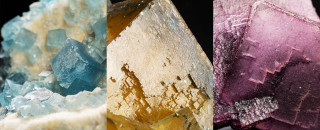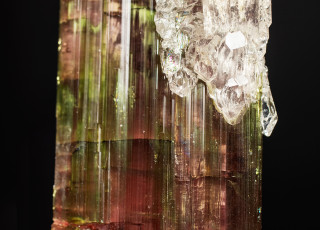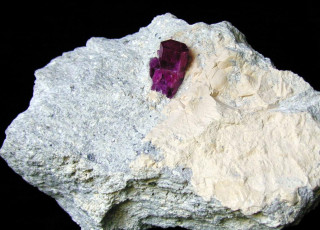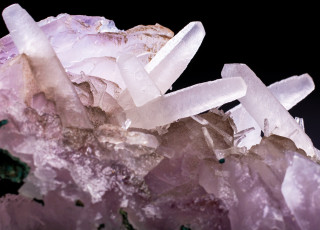Fluorite of Utah and Beyond
By Dave Richerson
Fluorite is very popular amongst collectors and museum visitors due to its beauty and relatively common occurrence. It has been found in just about every color of the rainbow, in sharp cube and octahedral crystals and even dodecahedrons and combinations such as a cube with octahedral faces on each corner of the cube. Fluorite is frequently found in cavities in limestone in quarries and in ore deposits. More rarely, it is found in cavities in coarse granite-type rocks (especially pegmatites) and even in volcanic flow rocks such as rhyolite.
The chemical formula of fluorite is CaF2. It was named in 1797 from the Latin word “fluere”, which means “to flow”. That was because ground up fluorite was added as a flux to provide better flow in making glass and processing iron ore into iron. The chemical element fluorine was not even discovered until 1886, but as you can see was named after fluorite. Fluorescence also was named after fluorite. This phenomenon was observed by miners in the fluorite mines in the Weardale region of England. When the fluorite was underground, it had a beautiful bright green color, but when taken out into the sunlight, it changed color to bluish. Scientists discovered that the change in color resulted from exposure to ultraviolet light, which is the higher energy portion of sunlight that causes you to get sunburned. When you visit the NHMU, be sure to stop at the long wave ultraviolet light display case in the mineral exhibit on the third floor and see how the green fluorite changes to a bright bluish-white when the lights are turned out and the ultraviolet light is turned on.

Image 1 — A cluster of fluorite crystals from the Deer Trail Mine near Marysvale, Utah. Photo by Mark Johnston
Utah is home to many fluorite localities. Image 1 shows a cluster of fluorite crystals from the Deer Trail Mine near Marysvale, Utah. When found in the mine, the crystals are coated with a thin layer of quartz to appear white and opaque. However, when the quartz is dissolved away with hydrofluoric acid, the beautiful color of the fluorite is revealed, plus a bonus is that the crystals fluoresce brilliantly. Even the crystal shape is special. Some of the crystals are dodecahedrons (12 diamond-shaped faces) and others are interesting combinations of cubes, octahedrons and dodecahedrons. Besides the specimen in the fluorescence exhibit, a much larger specimen is in the Utah minerals exhibit.
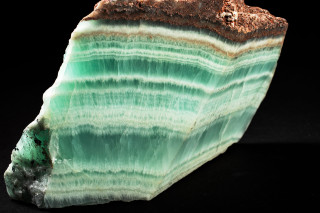
Image 2 — A spectacular polished specimen of the banded blue-green fluorite. Photo by Mark Johnston
Another interesting source of brightly fluorescent fluorite is in the Dugway Mining District in Juab Co., Utah. Here the fluorite is in banded layers that alternate between blue-green and white, purple and white and various shades of purple. Image 2 shows a spectacular polished specimen of the banded blue-green fluorite.
Pink and purple cubes of fluorite have been found in cavities in the Wildcat Mountains in Tooele Co., Utah. Examples are shown in Images 3 and 4. Unfortunately, this locality is now part of a military bombing test range, so is not accessible to collectors.
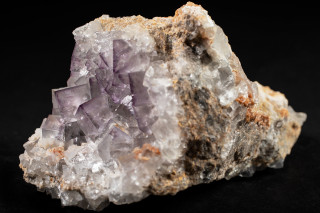
Image 3 — Pink and purple cubes of fluorite. Photo by Mark Johnston
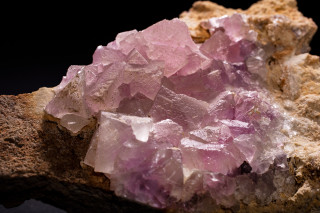
Image 4 — Pink and purple cubes of fluorite. Photo by Mark Johnston
Some of the most beautiful fluorite specimens in the world came from the fluorite mines in Harden Co., Illinois. Most of these mines closed in the early 1990s, but fortunately the NHMU received donations of a wonderful selection before the mines closed. One of the best is shown in Images 5 and 6. Image 5 shows an overview of the whole specimen, which is about 25 cm across. The first fluorite to grow was yellow cubes. Growth stopped, but then tiny golden crystals of chalcopyrite deposited on the surface of the yellow cubes. Then fluorite growth continued, enclosing the chalcopyrite and yellow fluorite, but this time the color was pale blue. We refer to the fluorite crystal inside another fluorite crystal as a “phantom” and the chalcopyrite crystals as “inclusions”. Some collectors specialize in phantoms and others in inclusions. That is what is so fun about collecting minerals; there are so many fascinating variations.
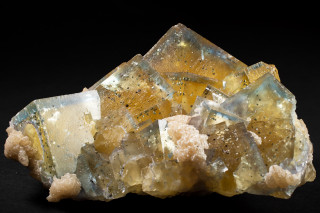
Image 5 — Yellow cubes of fluorite showing phantom and chalcopyrite crystals. Photo by Mark Johnston
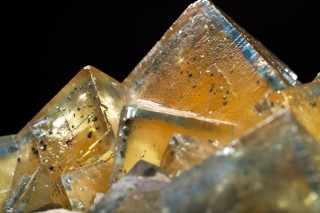
Image 6 — Yellow cubes of fluorite showing phantom and chalcopyrite crystals. Photo by Mark Johnston
The cube is the most common crystal form of fluorite. Image 7 shows light blue cubes contrasted on a white matrix from the Blanchard Mine near Bingham, Socorro Co., New Mexico. Image 8 illustrates yellow cubes from Germany. Image 9 shows purple cubes from near Cave-in-Rock, Illinois and Image 10 shows bright green highly-fluorescent cubes from Weardale, England.
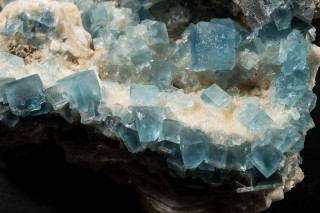
Image 7 — Light blue cubes contrasted on a white matrix from the Blanchard Mine near Bingham, Socorro Co., New Mexico. Photo by Mark Johnston
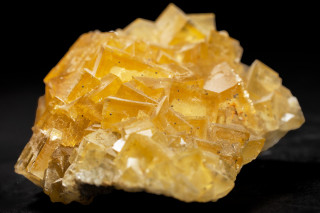
Image 8 — Yellow cubes from Germany. Photo by Mark Johnston
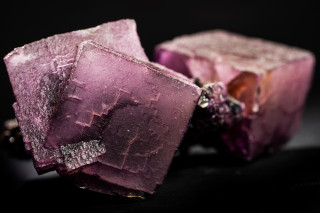
Image 9 — Purple cubes of fluorite from near Cave-in-Rock, Illinois. Photo by Mark Johnston
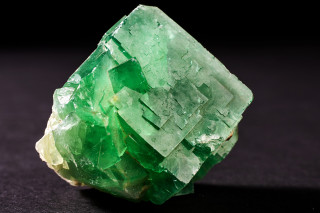
Image 10 — Bright green highly-fluorescent cubes from Weardale, England. Photo by Mark Johnston
The less common shape for fluorite is the octahedron. Image 11 shows fluorite octahedrons from Grant County, New Mexico.. Image 12 illustrates a cluster of pink fluorite octahedrons from Mina Navidad near Rodeo, Durango, Mexico.
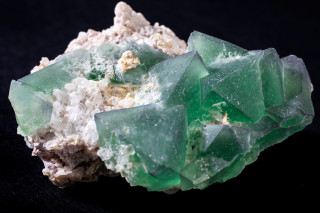
Image 11 — Fluorite octahedrons from Grant County, New Mexico. Photo by Mark Johnston

Image 12 — A cluster of pink fluorite octahedrons from Mina Navidad near Rodeo, Durango, Mexico. Photo by Mark Johnston
Many minerals exhibit cleavage. They fracture along a flat surface in a way that is related to their internal arrangement of atoms. For example, mica has a layered structure with strong atomic bonds within the layers, but week bonds between the layers. Thus, mica fractures easily between the layers and is said to have perfect cleavage in one direction. Fluorite has perfect octahedral cleavage in multiple directions. Cleavage planes often show up in crystals as thin fracture or crack lines. Image 13 illustrates these cleavage lines in a cluster of very large (about 5 cm across) multicolor octahedrons of fluorite from the De’an Mine, Wushan, China. Similar cleavage lines are easily visible in Image 14 in large cube crystals of fluorite from the Southern Illinois mines.

Image 13 — Cleavage lines in a cluster of very large (about 5 cm across) multicolor octahedrons of fluorite from the De’an Mine, Wushan, China. Photo by Mark Johnston

Image 14 — Cleavage lines visible in large cube crystals of fluorite from the Southern Illinois mines. Photo by Mark Johnston
Many other fluorite specimens are on display at the NHMU in the third floor exhibits and in the Earth Lab drawers. Many additional fluorite specimens are in the Collections cabinets and are occasionally placed on display. If you enjoy seeing spectacular photos of fluorite, go to Mindat.org and search for the fluorite galleries. Thousands of specimens are shown from around the world.
Dave Richerson is a retired associate professor of material science and engineering at the University of Utah. He is the author of the books "Modern Ceramic Engineering" and "The Magic of Ceramics," co-author or co-editor of five other books, and author or co-author of more than 100 technical and educational articles and reports. NHMU is part of the University of Utah in Salt Lake City. Our mission is to illuminate the natural world and the place of humans within it. In addition to housing outstanding exhibits for the public, NHMU is a research museum. Learn more.
